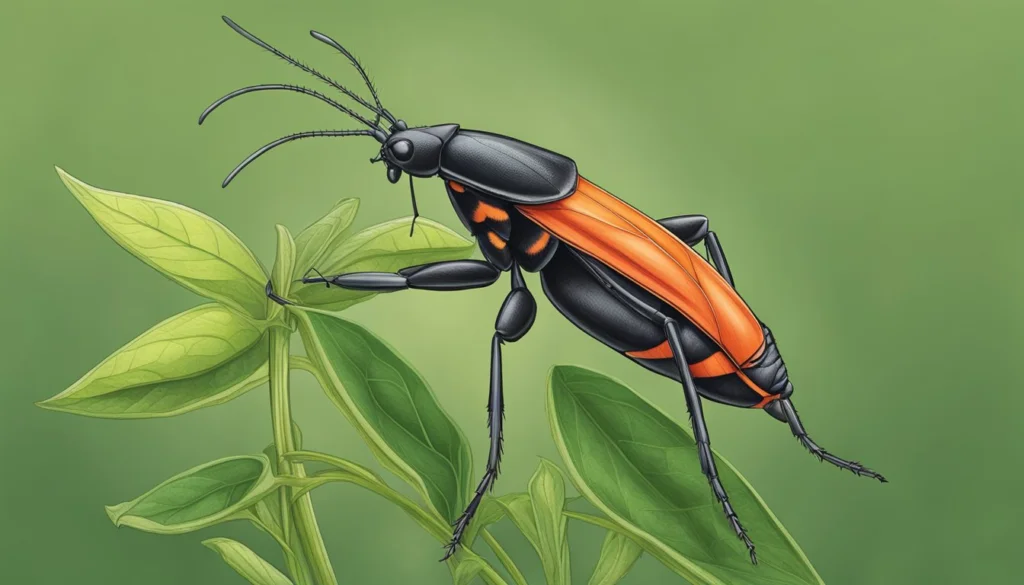The Milkweed Assassin Bug (Zelus longipes) is a fascinating insect known for its deadly hunting techniques and striking appearance. Found throughout the Americas, this predatory bug is both feared and admired for its lethal abilities in the insect world. With specialized tools for capturing prey and unique behaviors, the Milkweed Assassin Bug plays a crucial role in maintaining the balance of ecosystems by controlling pest populations. Let’s explore some intriguing facts about this extraordinary predator.
Master of Ambush: A Stealthy Predator
The Milkweed Assassin Bug is an ambush predator, relying on stealth and patience to capture its prey. It often hides in vegetation, waiting for unsuspecting insects to come close before striking. Using its long, sticky front legs, the assassin bug grabs hold of its prey, preventing it from escaping. This ambush strategy allows it to conserve energy and catch a variety of insects, including flies, beetles, and caterpillars.
The bug’s red and black coloration helps it blend in with milkweed plants and other types of vegetation, allowing it to remain undetected while it waits to strike.
Hunting Strategy:
- Ambush predator: Hides in vegetation and waits for prey to come close.
- Sticky legs: Uses long, adhesive front legs to trap prey.
- Stealthy behavior: Relies on camouflage and surprise.
A Deadly Proboscis
One of the most lethal tools of the Milkweed Assassin Bug is its piercing proboscis. This long, needle-like structure is used to inject toxic saliva into its prey. Once the proboscis penetrates the body of an insect, the assassin bug releases digestive enzymes that liquefy the internal tissues of the prey, allowing the bug to suck out the nutrients.
This method of hunting is not only efficient but also highly effective, as it quickly immobilizes prey and allows the Milkweed Assassin Bug to feed without much struggle.
Proboscis Function:
- Piercing proboscis: A sharp, needle-like mouthpart used to inject venom.
- Digestive enzymes: Liquefies prey from the inside for easy consumption.
- Immobilizes prey: The venom quickly disables the prey, making it easier to feed.
Vibrant and Warning Colors
The Milkweed Assassin Bug’s red, black, and orange coloration is not just for show—it’s also a form of aposematism, or warning coloration. These bright colors signal to potential predators that the bug may be dangerous or unpleasant to eat. While it doesn’t secrete toxins like some insects, its bite can be painful to both prey and larger animals, including humans.
This bright coloration helps deter predators, ensuring that the bug remains relatively safe while hunting or resting on vegetation.
Coloration:
- Aposematism: Warning colors signal potential danger to predators.
- Red, black, and orange: Helps the bug stand out and warn off threats.
- Protection: Deters potential predators from attacking.
Defensive Adaptations
While the Milkweed Assassin Bug is a fearsome predator, it is also equipped with several defensive adaptations to protect itself from threats. In addition to its toxic saliva, which it can use against predators, the bug’s bright coloring acts as a visual deterrent. Many predators associate bright colors with toxicity or danger, so the assassin bug’s coloration helps it avoid being eaten.
When threatened, the Milkweed Assassin Bug can also release a foul-smelling odor to repel predators. This chemical defense is common among many species of assassin bugs and can help them escape from birds, reptiles, or larger insects that may try to eat them.
Defense Mechanisms:
- Toxic Saliva: Can be used against predators if threatened.
- Warning Colors: Bright red and orange hues signal danger.
- Odor Release: Emits a foul smell to deter predators.
Beneficial Pest Controller
Although the Milkweed Assassin Bug may seem menacing, it plays an important role as a natural pest controller in gardens and agricultural areas. By preying on a wide variety of insects, including harmful pests like aphids and caterpillars, the assassin bug helps maintain the balance of insect populations. This makes it a beneficial presence for farmers and gardeners, as it reduces the need for chemical pesticides.
While its bite can be painful, the Milkweed Assassin Bug is more of an asset than a threat to humans, as it controls the populations of crop-damaging insects.
Ecological Role:
- Pest controller: Preys on harmful insects like aphids and caterpillars.
- Beneficial to agriculture: Helps reduce the need for pesticides.
- Balance in ecosystems: Plays a key role in maintaining healthy insect populations.
Painful Bite to Humans
While the Milkweed Assassin Bug doesn’t actively seek out humans, it will bite if handled or threatened. Its bite can be painful and is often compared to a bee sting. The proboscis, designed to inject venom into prey, can also cause swelling and irritation when it pierces human skin. However, the venom is not dangerous to humans, and the pain usually subsides after a short time.
If bitten by a Milkweed Assassin Bug, it’s best to clean the area with soap and water and apply a cold compress to reduce swelling.
Bite Facts:
- Painful bite: Comparable to a bee sting.
- Venom: Not dangerous to humans, but can cause irritation.
- Prevention: Avoid handling the bug to prevent bites.
Stealth and Speed in Hunting
The Milkweed Assassin Bug’s predatory success is not just due to its venomous bite—it is also a stealthy and quick hunter. The bug moves slowly and cautiously while stalking its prey, using its long legs to carefully position itself for the perfect strike. Once it gets close enough, the bug uses its speed and agility to swiftly pierce the prey with its proboscis.
This combination of stealth and speed makes the Milkweed Assassin Bug an efficient and deadly predator. It can patiently wait for the right moment to strike, ensuring a high success rate in capturing prey.
Hunting Style:
- Stealthy Stalker: Moves slowly to avoid detection by prey.
Lifecycle and Reproduction
The lifecycle of the Milkweed Assassin Bug follows the typical insect pattern of egg, nymph, and adult stages. Females lay eggs on the underside of leaves or on plant stems, where they are protected from predators. After hatching, the nymphs go through several molts, gradually growing into adults. Nymphs look similar to adults but lack fully developed wings and are more vulnerable to predators.
As adults, Milkweed Assassin Bugs live for several months, during which time they continue to hunt and reproduce, contributing to the overall health of their ecosystem.
Lifecycle:
- Stages: Egg, nymph, and adult.
- Nymphs: Molt several times before reaching adulthood.
- Egg-laying: Females deposit eggs on leaves or stems for protection.
Global Distribution
The Milkweed Assassin Bug is native to the Americas, with its range extending from the United States down to Central and South America. It is commonly found in gardens, forests, and agricultural fields, where it hunts for prey among plants. While it prefers warm climates, it can adapt to various environments as long as there is vegetation and a stable food source.
Its adaptability has allowed the Milkweed Assassin Bug to thrive in both natural and human-modified environments, making it a common sight in many parts of the world.
Habitat:
- Native range: Found throughout the Americas, from the U.S. to South America.
- Habitats: Gardens, forests, agricultural fields.
- Adaptability: Thrives in both natural and human-altered environments.
Conclusion
The Milkweed Assassin Bug is a remarkable predator with specialized hunting skills and a crucial role in controlling pest populations. Though it has a fearsome appearance and painful bite, it is an important ally in the fight against crop-damaging insects. Whether admired for its efficiency as a predator or its striking colors, the Milkweed Assassin Bug is a fascinating and beneficial insect in the ecosystems it inhabits.
FAQ
How does the Milkweed Assassin Bug catch its prey?
The Milkweed Assassin Bug uses its long, sticky front legs to grab prey and its sharp proboscis to inject venom, liquefying the prey’s insides for easy consumption.
Is the Milkweed Assassin Bug dangerous to humans?
While its bite can be painful, the Milkweed Assassin Bug is not dangerous to humans. Its venom is only harmful to the small insects it preys on.
What does the Milkweed Assassin Bug eat?
The Milkweed Assassin Bug is a carnivorous predator that primarily feeds on other insects, including flies, caterpillars, beetles, and aphids.
How does the Milkweed Assassin Bug benefit agriculture?
By controlling pest populations, the Milkweed Assassin Bug helps reduce the number of harmful insects that can damage crops, making it a beneficial presence in agricultural areas.
What should I do if I’m bitten by a Milkweed Assassin Bug?
If bitten, clean the area with soap and water, apply a cold compress to reduce swelling, and avoid handling the bug to prevent further bites.


